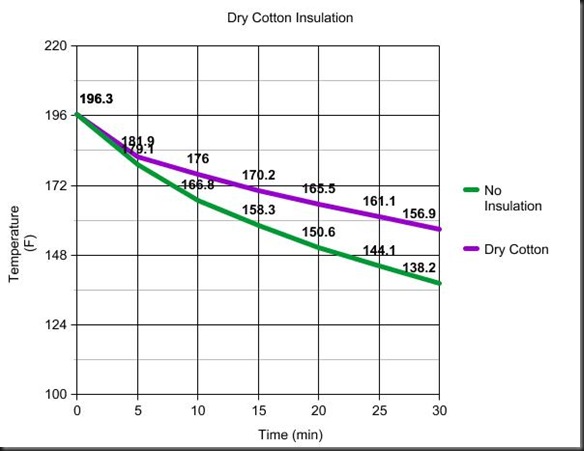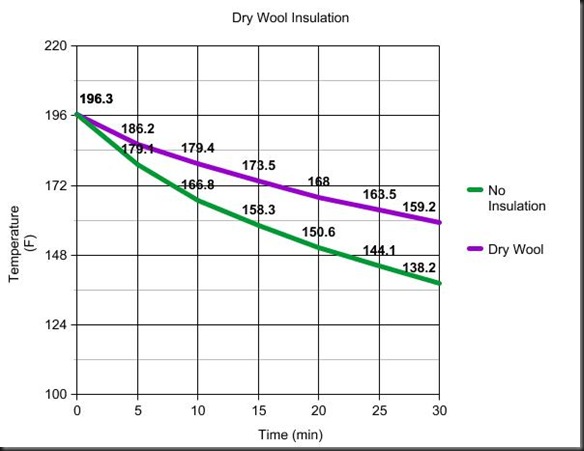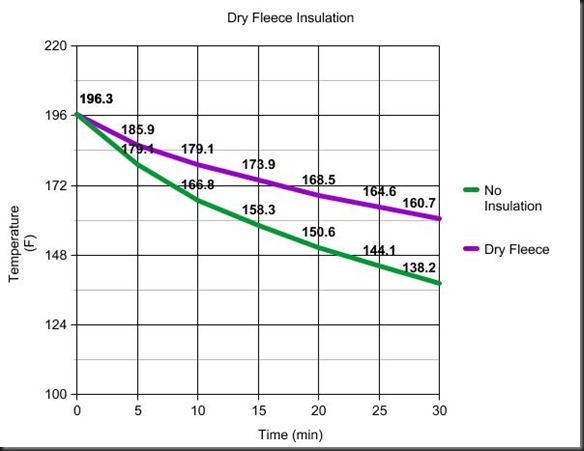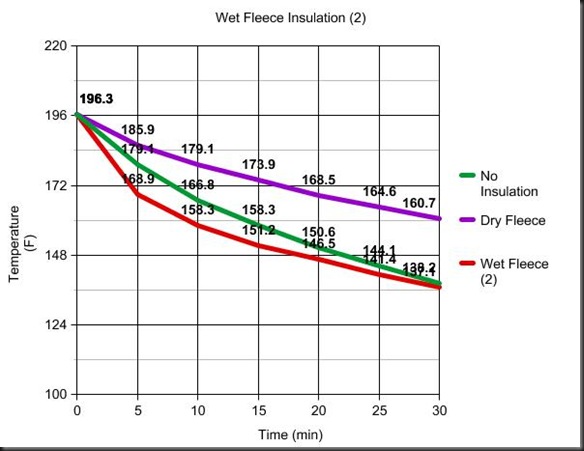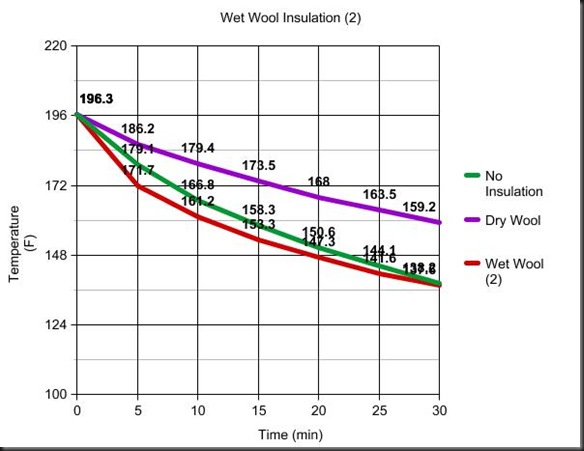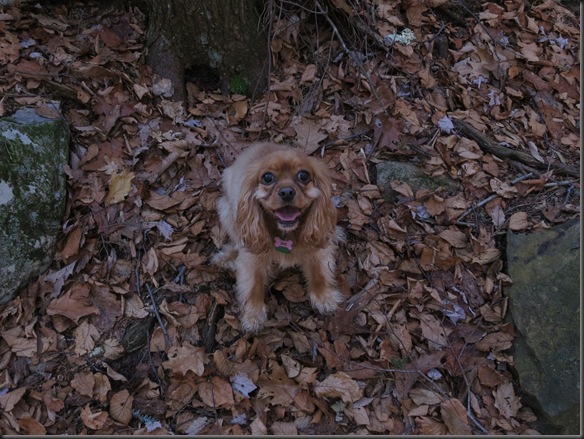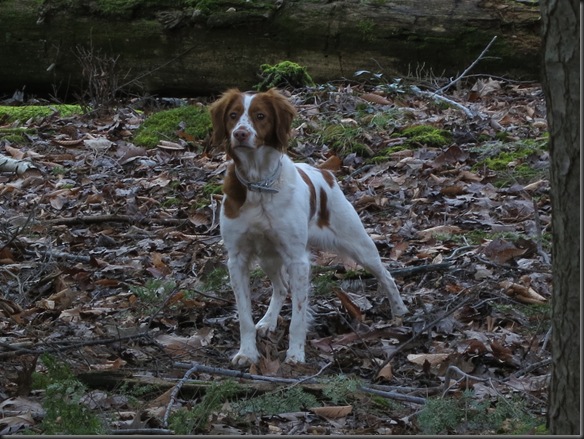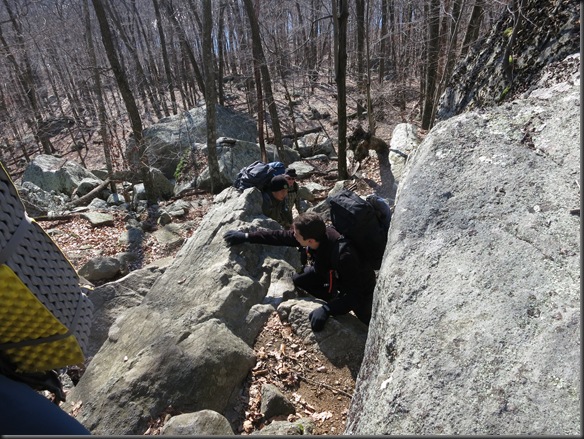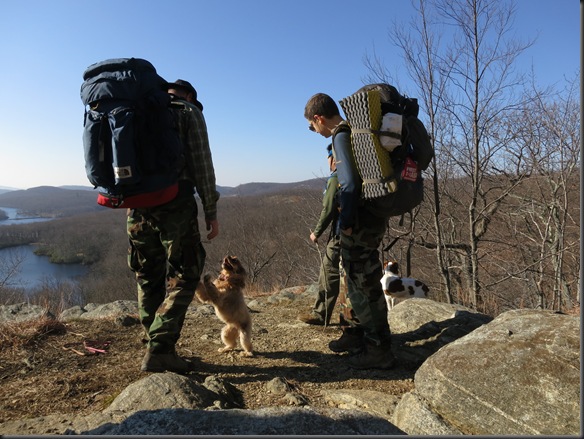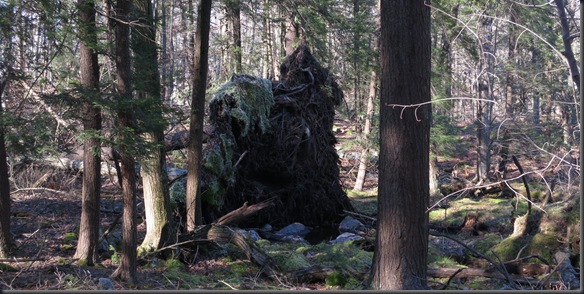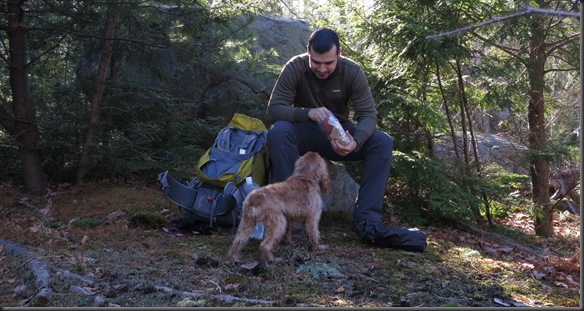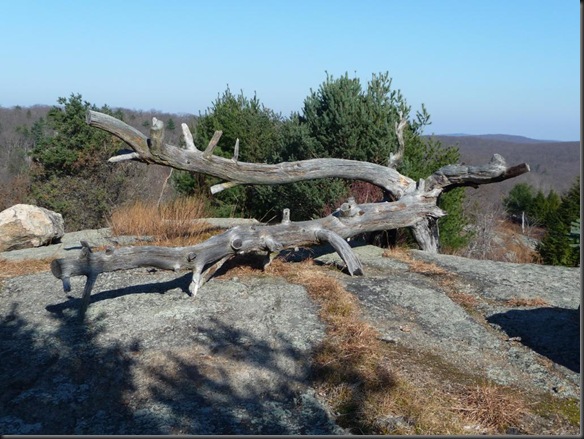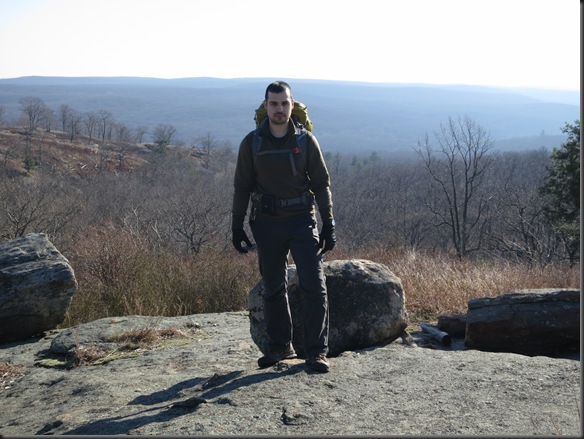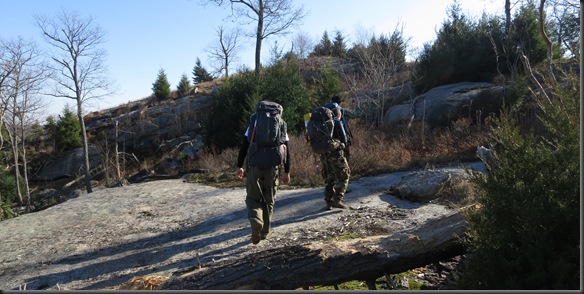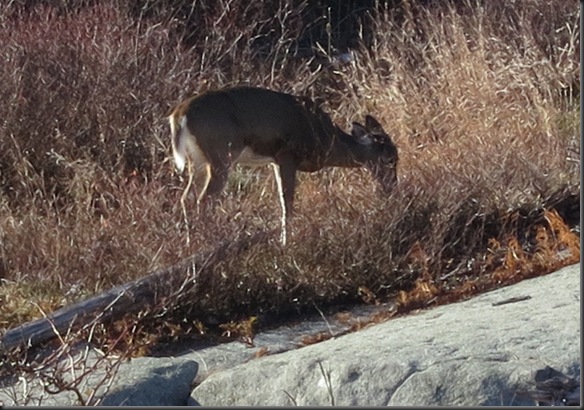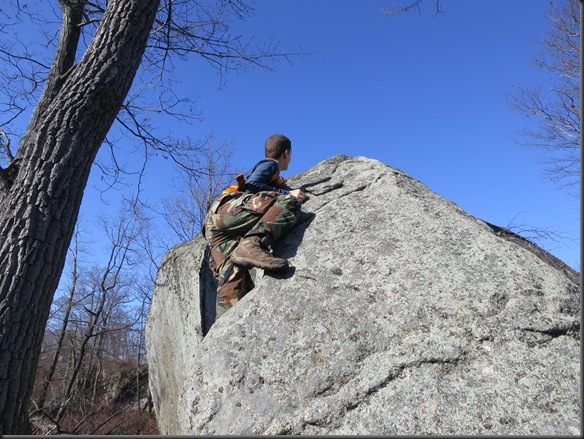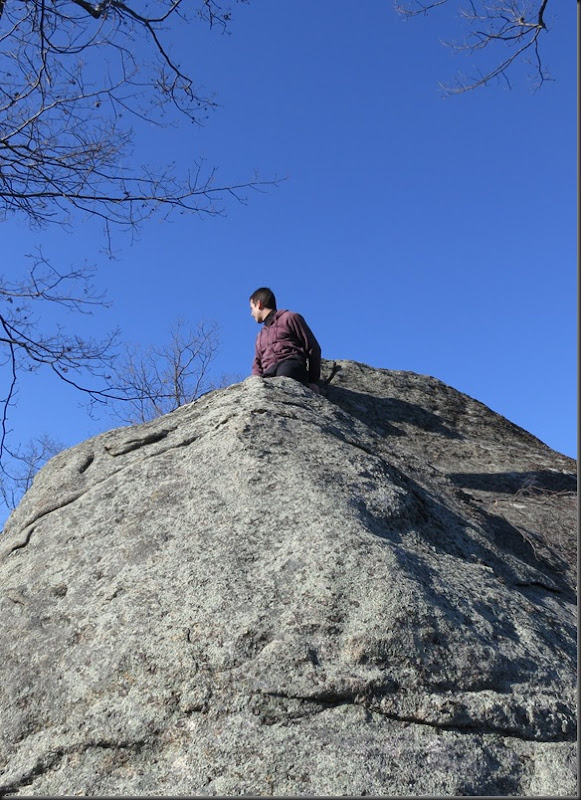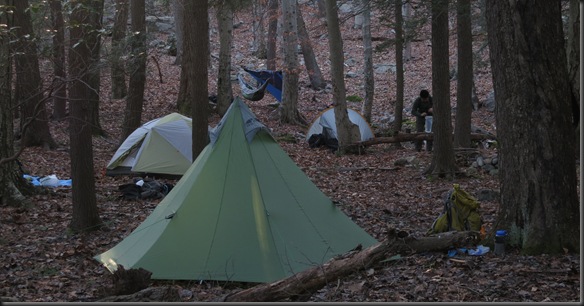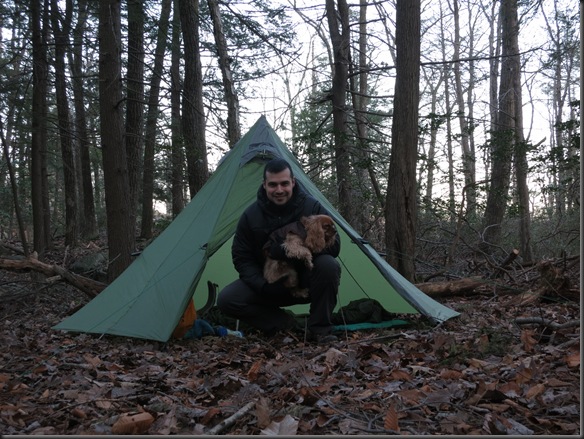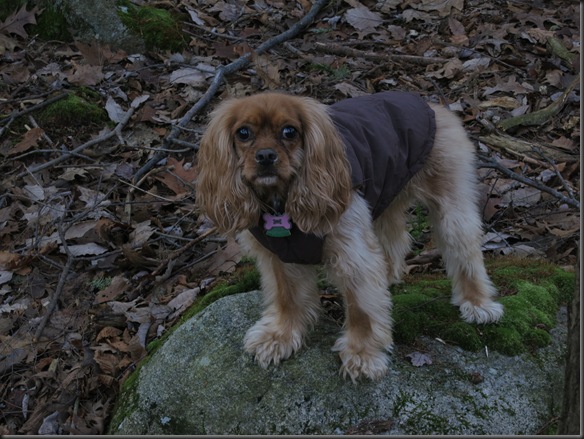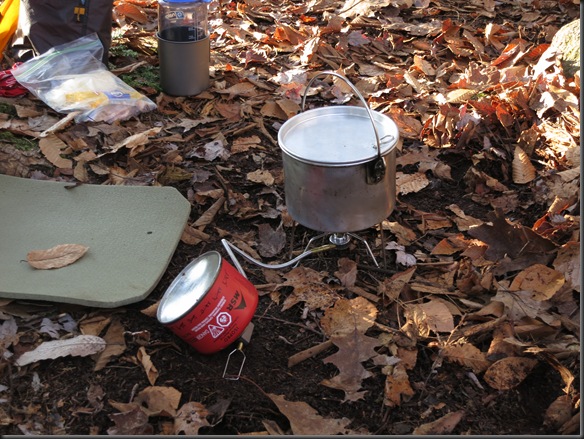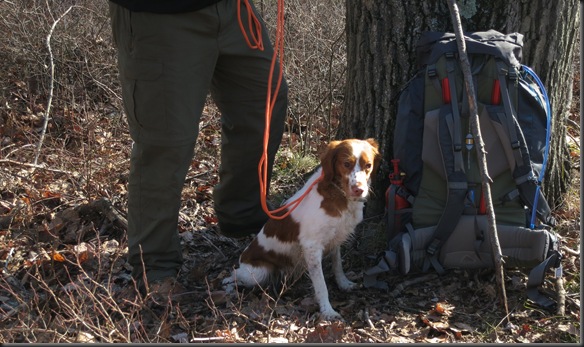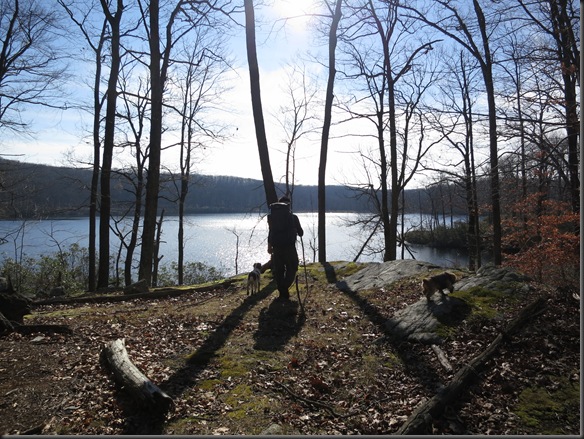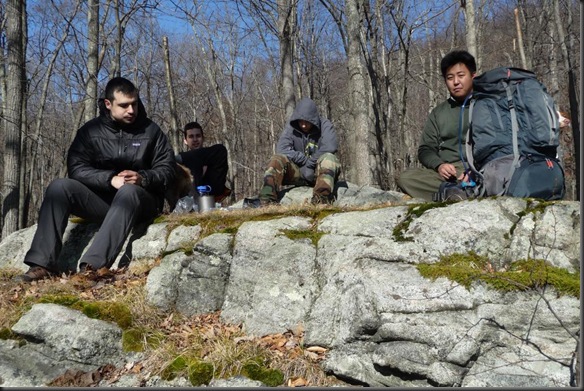Oh no! Not another insulation comparison test! That’s right, it’s another one. This time it features the material that we keep being told is just about the worst insulator for the outdoors. How many times have we heard “Cotton Kills!”. Well, I figured I would run it through some tests to confirm that.
The method for testing is the same I have used for wool, merino wool, and fleece so far. You can click on each material to view the results and the testing method used.
So, how did cotton stack up? For the test I used a cotton sweater similar in thickness to the wool watch caps and the 200 weight fleece shirt used in the previous tests. First, I measured the temperature loss when a heated container was wrapped with cotton insulation. I then compared it to the results when no insulation was used. Here is the resulting graph.
For ease of comparison, I have added here the results from dry wool and dry fleece insulation.
While it is hard to compare the materials head to head, as despite my efforts to pick materials of equal thickness and make, there will be inevitable differences, we can still see a more pronounced dip in temperatures with the cotton insulation than with the other two. I think it is a noticeable difference between the materials.
Now, I repeated the test with the cotton insulation being initially wet. Here is the resulting heat loss.
And again, for comparison purposes, the wet wool and wet fleece tests.
So…I don’t know what to say. I expected much more significant differences. We could certainly conclude that cotton is not as good of an insulator as the other two materials, both when wet and when dry, but I am finding it very hard to say that “cotton kills”. The numbers are just not that different. The unavoidable fact is that all of the tested materials lose significant insulation when wet. I don’t think any of them can be said to keep you warm when wet, and I certainly don’t think any one of them is so significantly worse than the others as to make it deadly.
Now, I should note that the cotton sweater was the slowest drying material so far, taking almost three days (about 65 hours) to dry. However, wool seems to dry extremely slowly as well, so the difference there is not that extreme.
It is often said that cotton is a poor insulator when wet because the fibers collapse when they get wet, eliminating the dead air space which provides the insulation. I think however, and this is just my opinion, that the type of knit used to make the fabric will make a difference in that respect. While the fibers collapsing certainly sounds true for something like a cotton t-shirt, a thickly knit sweater will likely retain quite a bit of dead air space, which is what might have happened in the above test. I don’t know; that is just my theory.
To give credit where credit is due, a fellow blogger (Perkle’s Blog) has been saying for years now that in his home country of Finland people have both traditionally worn and currently wear cotton clothing in the woods without a problem. The above test seems to indicate that this practice is not as insane as the internet sound bites would indicate. While we may conclude that cotton is not as good of an insulator as other materials, it appears you will be just as cold in any of them if you get them wet.
